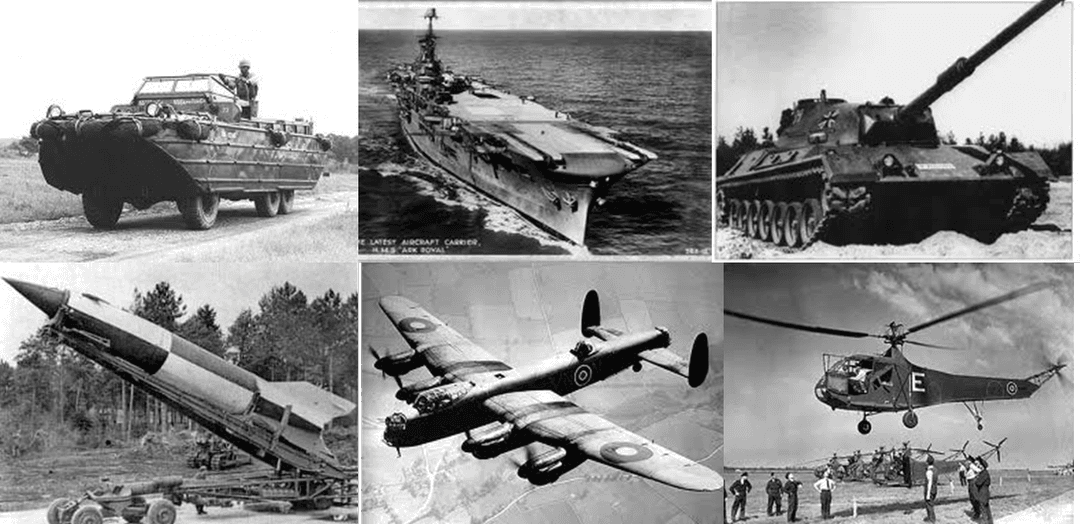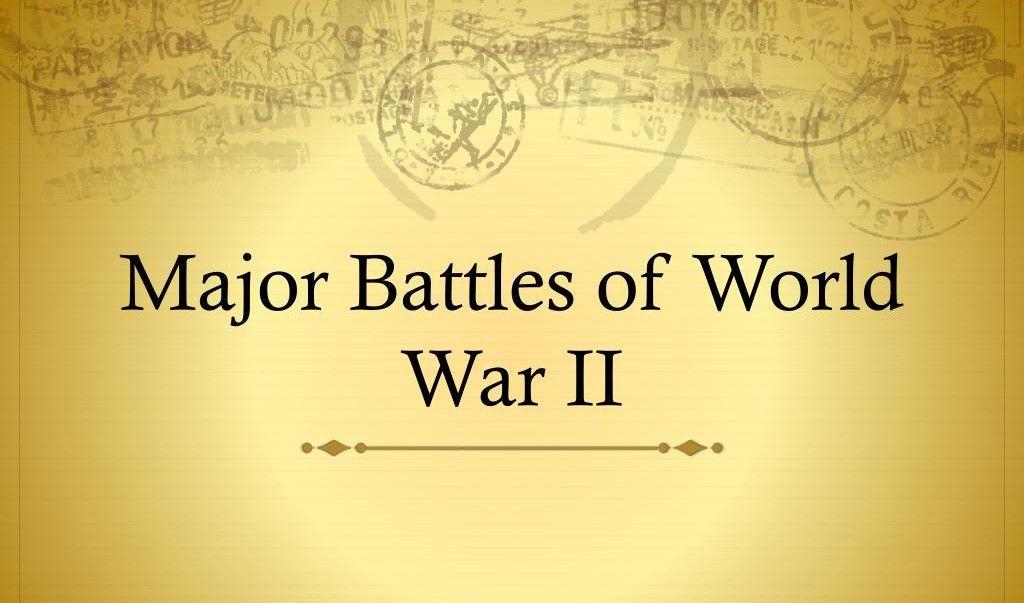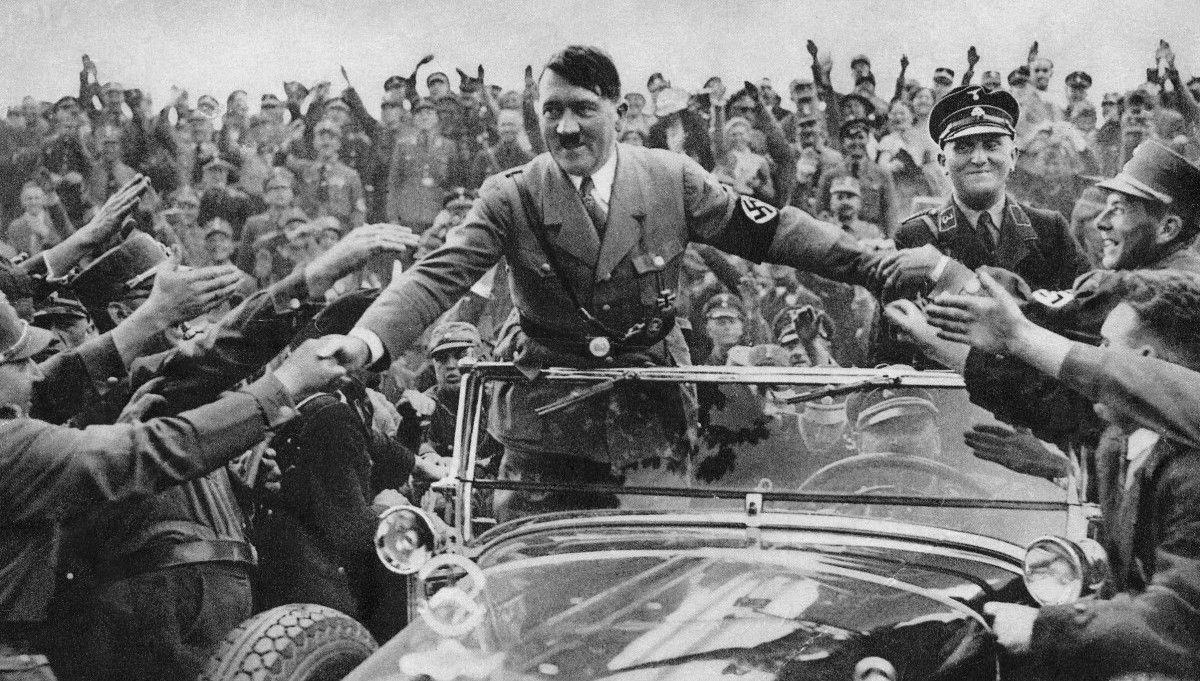World War II, a global conflict from 1939 to 1945, was not just a battle of strength but also a war of technological innovation and intelligence. This era saw unprecedented advancements in technology, radically altering the dynamics of warfare.
The Role of Technology in Shaping WWII
History • 23 Jan, 2024 • 62,839 Views • ⭐ 5.0
Written by Anand Swami

From radar to encryption, and from aircraft to atomic power, each technological leap played a pivotal role in shaping strategies and outcomes. This article delves into the significant technological advancements of WWII, examining their impact and legacy in the theatre of war.
The Evolution of Radar Technology

Radar technology, which played a pivotal role in WWII, was a critical factor in the Allies' defensive and offensive strategies. In the UK, the Chain Home system, a network of radar stations, was instrumental in detecting incoming German aircraft during the Battle of Britain. This early warning system allowed the RAF to effectively mobilise and counter Luftwaffe attacks.
HISTORY QUIZ • 10 QUESTIONS • 2 MINS
We've got a History quiz for you!
TAP TO PLAY

Similarly, in the Pacific, radar-equipped American ships and aircraft were crucial in detecting Japanese movements, as evidenced in the Battle of Midway. This technology not only enhanced air and naval combat but also aided in anti-submarine warfare, significantly reducing the effectiveness of German U-boats.
Enigma: The Cipher War

The cracking of the German Enigma code was one of the most significant intelligence triumphs of WWII. British cryptanalysts, led by Alan Turing at Bletchley Park, developed the Bombe machine, which greatly expedited the decryption process. The intelligence gleaned from Enigma termed 'Ultra', was closely guarded and provided critical insights into German strategies.
It is estimated that the breakthrough in deciphering Enigma may have shortened the war by as much as two years, saving countless lives. The success against Enigma also laid the groundwork for modern computing and cryptography.
TECH QUIZ • 10 QUESTIONS • 2 MINS
We've got a Tech quiz for you!
TAP TO PLAY

The Development of Aircraft and Air Warfare

Aircraft technology saw rapid advancements during WWII. The introduction of aircraft like the P-51 Mustang, which provided long-range escort to bombers over Germany, was a game-changer. The development of radar-equipped night fighters and ground-controlled interception techniques also significantly reduced the effectiveness of enemy bombing campaigns.
The war also saw the first use of jet aircraft and the increased use of aircraft for various roles, including reconnaissance, ground attack, and strategic bombing, which played a decisive role in various theatres of the war.
The Impact of Tanks and Armoured Vehicles

The evolution of tanks and armoured vehicles during WWII was remarkable. The German blitzkrieg strategy relied heavily on the combined arms tactics, with tanks like the Panzer IV and the Tiger playing key roles. On the Eastern Front, the Soviet T-34 tank, with its superior mobility and armour, was a crucial factor in countering the German invasion. The North African campaign highlighted the importance of armoured warfare, with the British and German forces engaged in extensive tank battles, such as at El Alamein.
The Introduction of Jet Engines and Rocketry

The introduction of the jet engine and rocketry represented significant technological leaps. The German V-2 rocket, the world's first long-range guided ballistic missile, was a precursor to modern ICBMs and space exploration. On the aviation front, the British Gloster Meteor, another early jet fighter, entered service shortly after the German Me 262, although it saw limited combat. These technologies, although in their infancy during the war, indicated the future direction of military and aerospace technology.
Naval Warfare: Submarines and Aircraft Carriers

In naval warfare, the transition from battleships to aircraft carriers as the primary capital ship was a significant development. The Japanese attack on Pearl Harbor and the subsequent battles in the Pacific, especially the Battle of Midway, demonstrated the importance of air power in naval warfare.
The role of submarines also evolved, with the Allies improving anti-submarine tactics and technology, including the use of sonar, to counter the German U-boat threat, a key aspect of the Battle of the Atlantic.
The Role of Electronic Warfare and Communications

The advancement in electronic warfare and communications significantly impacted WWII. Technologies like the British-developed 'Window' (radar countermeasures) and the German 'Schnorkel' (a submarine snorkel that allowed U-boats to run submerged on diesel engines) showed ingenuity in electronic and communication warfare. The use of radio navigation systems, such as the British Oboe and the American LORAN, improved the accuracy of bombing operations, contributing to the effectiveness of air campaigns.
The Advent of Nuclear Technology

The development and use of nuclear technology during WWII marked a turning point in military history. The Manhattan Project, led by the United States with participation from the UK and Canada, culminated in the successful detonation of the first nuclear bomb in New Mexico in 1945. The subsequent bombings of Hiroshima and Nagasaki demonstrated the devastating power of nuclear weapons, leading to Japan's unconditional surrender and the end of the war in the Pacific.
Medical Advances and Their Impact

The war also drove significant advancements in medical technology and treatments. The mass production of penicillin, discovered by Alexander Fleming in 1928, was accelerated due to the war, saving thousands of lives from bacterial infections.
There were also advances in trauma surgery, blood transfusion techniques, and the treatment and understanding of psychological trauma (shell shock), improving the survival and recovery rates of wounded soldiers.
Intelligence and Espionage Technologies

The role of intelligence and espionage in WWII cannot be overstated. Technologies like the German 'Enigma' machine and the British 'Ultra' intelligence were crucial in the war's outcome. The Allies' use of reconnaissance aircraft, such as the American P-51 Mustang equipped with cameras, provided critical information on enemy positions and movements. The development of espionage techniques and gadgets, such as concealed cameras and secret communication devices, played a vital role in gathering intelligence behind enemy lines.
Conclusion
The technological advancements of World War II were game-changers in the theatre of war, influencing tactics, strategies, and the very nature of combat. From radar to the atomic bomb, each innovation left an indelible mark on military and civilian life.
These technologies not only determined the outcome of the war but also set the stage for future conflicts and peacetime applications, underscoring the profound and lasting impact of technological progress during this pivotal era in history.
Test your knowledge of History! Visit:
https://4123.play.quizzop.com/history-quiz/category
Rate this article
Other articles you may like
5 Iconic Museums of Modern Art in the World
History • 14 Aug, 2023 • 62,011 Views

Top 5 Cities with Impressive Streets in the World
History • 14 Aug, 2023 • 60,194 Views

7 Architectural Wonders of the Middle East
History • 14 Aug, 2023 • 62,092 Views

The 5 Most Ancient Temples in Tamil Nadu
History • 9 Aug, 2023 • 41,612 Views

Top 6 Mughal Architectural Wonders in India
History • 9 Aug, 2023 • 38,458 Views





